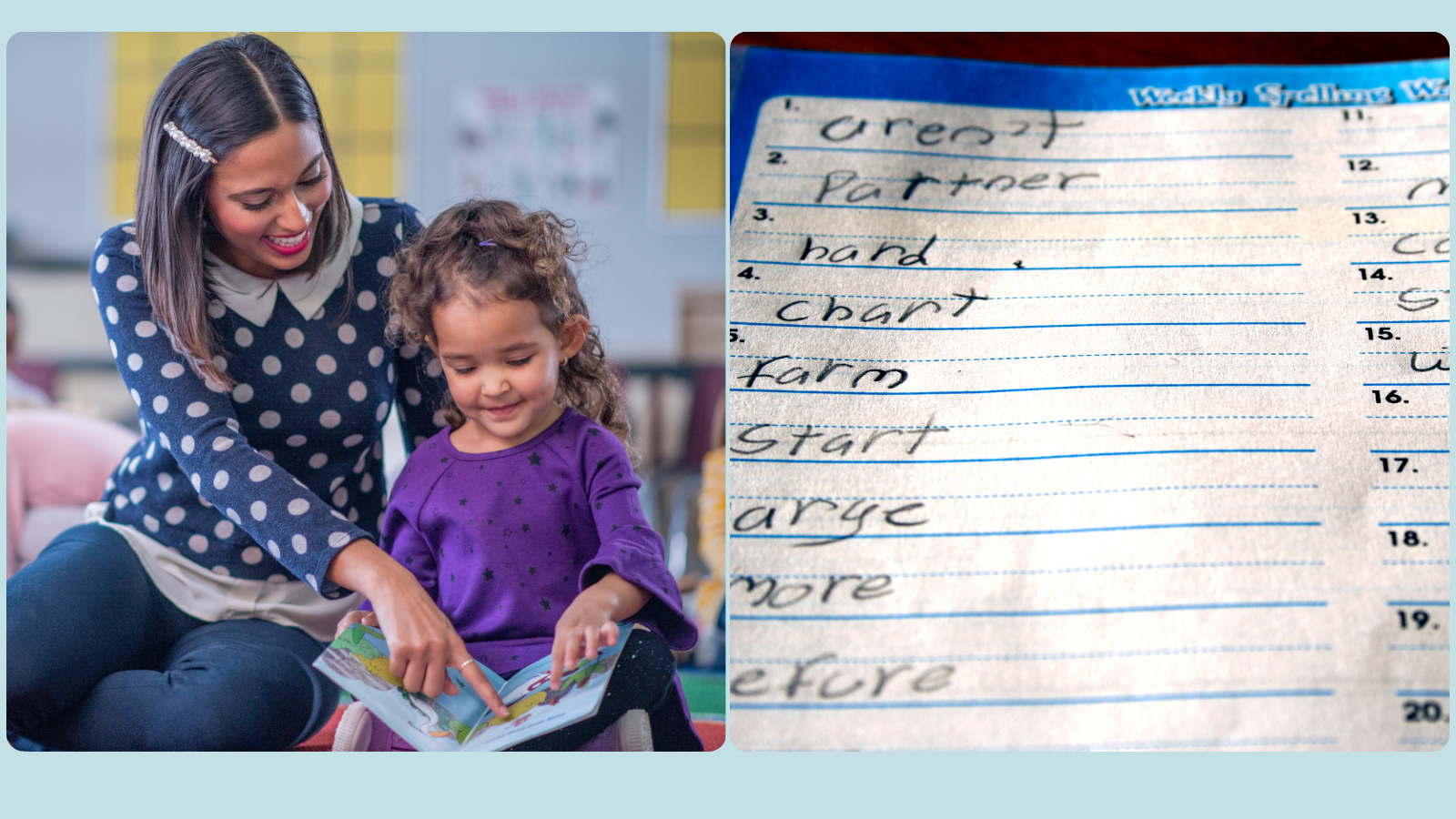Why poor kids are more likely to be poor readers (and what we can do about it)
Over the school holidays, I’ve been reading some influential business books in preparation for a course I’m giving. By definition, these books were penned by highly literate, highly educated authors. Writers who have enjoyed great financial and life success.
A pervasive theme in these books is the idea that you can “Think Yourself Rich” ™. The sentiment seems innocent, inspiring even. But, the more I think about it, the angrier I get. For, if you flip it around, it insinuates something atrocious – that, if you are not rich, you have somehow failed to think hard enough about it to escape poverty.
If only life were that simple!
Good books can change your mind
When I was 22, I stumbled on Slaughterhouse-Five by Kurt Vonnegut. I read it in a single, sunny day in a pretty park in the fairy-tale town of Český Krumlov. It’s a terrific, powerful, troubling, hilarious, and devastating read. It changed my view on many things, including poverty.
Consider this quote (ostensibly about Americans, but applicable to most of us):
Americans, like human beings everywhere, believe many things that are obviously untrue. Their most destructive untruth is that it is very easy for any American to make money. They will not acknowledge how in fact hard money is to come by, and therefore, those who have no money blame and blame and blame themselves. This inward blame has been a treasure trove for the rich and powerful, who have had to do less for the poor, publicly and privately, than any other ruling class since, say, Napoleonic times.”
Poverty and reading outcomes
Now, why am I writing about poverty on a speech pathology blog? And just what does poverty have to do with reading?
Well, it turns out poverty has a huge, well-known, and negative impact on literacy achievement in all English-speaking countries. In Australia, you can look at any number of stats to see it. Here are just a few:
- In 2009, 13.9% of Australian children in the lowest socioeconomic quintile were assessed as “developmentally vulnerable” in language and cognitive skills, compared to 4.7% of kids in the highest quintile (Australian Early Development Index Survey, 2009).
- In 2009, the Programme for International Student Assessment (PISA) team assessed the literacy of 15 year-olds in Australia and several other countries. They found 25% of 15 year old young adults in the lowest socioeconomic quartile scored in the lowest literacy band or below, compared with 5% of the children in the highest quartile (Thomson & Bartoli, 2010).
- In 2015, PISA again assessed the literacy of 15 year-olds. For Australian students, they found:
- students in the highest socioeconomic quartile achieved (on average) significantly higher literacy scores than students in the lowest socioeconomic quartile: representing over one proficiency level or around three years of schooling! The score for students in the lowest socioeconomic quartile was significantly lower than for students across the OECD; and
- only 5% of students in the lowest socioeconomic quartile were high performers compared to 8% of students in the second socioeconomic quartile, 12% in the third socioeconomic quartile and 21% in the highest socioeconomic quartile (Thomson et al., 2016). (You can read more about these results – here and here.)
Why?
Well first, let’s look at what we mean by “socioeconomic status” (SES).
It doesn’t mean “not much money”; and different studies use different definitions. For example, two measures used by the OECD to represent socioeconomic background are:
- the highest level of the father’s and mother’s occupation; and/or
- the index of economic, social and cultural status, based on three indices: the highest occupational status of parents; the highest educational level of parents in years of education; and home possessions.
Other studies use self-reported, sometimes slightly weird measures, such as the number of books in the family home (e.g. The Progress in Reading Literacy Studies, or PIRLS).
What’s becoming clear is that SES (however defined) is just a proxy – a stand-in – for other things that are more likely to affect literacy directly (e.g. Fergusson et al., 2008). It’s also becoming clearer that a student’s achievement is predicted not just by their own SES but by other factors, too.
So what are some factors that can affect literacy outcomes for low SES students?
Researchers Dr Jennifer Buckingham, Professor Kevin Wheldall and Dr Robyn Beaman-Wheldall published a wonderful paper on this back in 2013 outlining some key ideas. I’ve read it several times, and I think about it a lot when I’m working on improving services, or giving advice to families, students and teachers.
So here are 10 factors that may explain (at least in part) why low SES is a significant risk factor for poor reading outcomes. If you are like me, you won’t be able to stop thinking about things we could try to help fix the problem. There are some great minds working on it. But all of us working with kids with reading difficulties have a part to play.
(1) Differences in early pre-literacy skills
- Kids from low SES backgrounds tend, on average, to demonstrate lower skills in phonological awareness and oral language (including vocabulary) (e.g. Henning et al., 2010; Hart & Riseley, 2003). Both skills are key elements to early literacy.
- Early literacy is a strong predictor of a child’s literacy performance throughout their school life (e.g. Claessens et al., 2009). Reading ability is not set at 5 years of age – there is a lot of movement in the primary school years – but low SES students are more likely than high SES students to remain poor readers if they start school as poor readers.
This research is the main reason I support high quality, free preschool instruction (including phonological awareness and vocabulary training), for all low SES children (and, in fact, for all children).
(2) Genetic factors – potential versus achievement
You can’t change your genes. And genetic factors play a big part in determining a student’s potential. But the extent to which that potential is realised depends on the student’s environment. High SES students tend to be limited by their innate abilities. But, for many low SES kids, environmental factors can get in the way of students reaching their true potential (e.g. Turkheimer et al., 2003; and McGrath et al., 2007).
In our clinic, we set high expectations for every student we meet. A few people think we sometimes push too hard, and there may be some truth to that. But our goal is always to help students reach their potential, never to settle.
(3) Home factors
- Parent attitudes/encouragement: It turns out that values and parenting practices are stronger factors than income (over a basic level) or parents’ education levels (Hattie, 2009). In other words, low SES kids’ reading skills can be supported by parents having high educational aspirations and expectations for their kids, and encouraging their kids to read and to reason (e.g. Fan & Chen, 2001; Fergusson et al., 2008; and Wilder, 2013). This isn’t a case of thinking yourself literate. It’s more about developing a student’s motivation to read, and building a self-concept as a reader and for self-regulated learning (e.g. Guthrie et al., 1999; Petscher, 2010, Katzir et al., 2009; and Xu et al., 2010). Thus, parents’ and students’ expectations are strong predictors of later achievement (Chowdry et al., 2011).
- Books in the house: an Australian study suggests that having books in the home has a greater impact on children whose parents had the lowest levels of education than children with university-educated parents. (Evans et al., 2010)
We work with parents to instill high expectations for school. We also have a free book borrowing program and encourage families to join and use the local library.
(4) Time spent reading/print exposure/reading for pleasure, with the focus on fiction and non-fiction books (rather than magazines, comics or newspapers)
- The link between reading time and reading achievement is important for students of all abilities. Even reading just 10 minutes a day outside of school can have a significant, positive effect on reading skills for below average and average readers (e.g. Taylor et al., 1990). Some researchers think that having dedicated reading time at home is more directly related to creating a positive home environment for reading, than simply reading itself (McKool, 2007).
- Other researchers think that the amount of print exposure is more reliable than how much time kids spend reading (e.g. Mol & Bus, 2011).
- Differences in time spent reading for enjoyment appear to translate into literacy performance (e.g. Thomson & De Bortoli, 2010). Reading books outside of school time – fiction and non-fiction – is a predictor of vocabulary growth (Lawrence, 2009). Interestingly, reading magazines, comics and newspapers seem to have very little or even negative effects on reading performance and vocabulary! (Lawrence, 2009; Thomson & De Bortoli, 2010).
- With reading skills, good readers get better, and poor readers slip further behind – the so-called Matthew Effect. Kids who don’t master the basics tend to read less than peers who can decode easily (see below).
In our reading intervention programs, we encourage both structured practice of fundamental skills, including through decodable books, as well as less structured reading for pleasure. Regular library visits where the student gets to pick any book they want, along with providing recommendations based on a student’s reading skills and interests, can make a big difference!
(5) Physical health and sleep
- Kids in the lowest SES quartile are twice as likely to be rated as developmentally vulnerable in terms of physical health and well-being (Centre for Community Child Health and Telethon Institute for Child Health Research, 2009).
- Poor health can impact school attendance (e.g. Pahel & Lee, 2011).
- Some low SES kids are at a heightened risk of early onset, chronic otitis media, which can cause hearing loss and affect speech and language development (even if the effects are temporary) (e.g. Winskel, 2006).
- On average, lower SES kids tend to get less sleep than higher SES kids (El-Sheikh et al., 2010). There is some evidence that insufficient sleep may affect cognitive functioning, intellectual ability, language comprehension, letter-word recognition and passage comprehension (e.g. Eide & Showalter, 2012).
For preschoolers at risk for communication and reading disorders, we inform parents about the importance of adequate sleep and sleep routines, with a view to establishing routines well before ‘big school’ starts. For older students, we counsel them about the importance of sleep and limiting things like blue light exposure before bed.
(6) Behavioural problems?
The link between SES and behaviour is complex and controversial. There is some evidence that the proportion of kids assessed as developmentally vulnerable increases as SES decreases. Kids with developmental language disorders are at heightened risk of behavioural difficulties. But the direction(s) of the relationship(s) between SES and behaviour at different points of development are not clear, and it usually not possible to establish cause and effect.
(7) School attendance and mobility
- There is a clear positive relationship between school attendance and literacy achievement from Kindergarten and Year 1 (e.g. Attendance Works, 2011).
- Children from low SES backgrounds have, on average, lower attendance rates and a higher prevalence of chronic absenteeism (missing more than 10% of the school year), which places them at a higher risk for reading failure.
- Moving schools is also correlated with reading – kids who change schools a lot are at a higher risk of lower reading achievement throughout primary school and high school. The relationship between moving schools and reading is stronger for low SES families (e.g. Burkam et al., 2009).
This research explains, in part, why so many schools in our area strongly discourage long school absences – especially in Kindergarten and Year 1. We agree with them.
(8) School-level SES is more important than student-level SES
- Now this is an important point: In most OECD countries, the literacy performance of 15 year-olds is more strongly related to the SES of the school than the individual student (OECD, 2010).
- A strong body of research supports the idea that school-level SES is more important than student-level SES (e.g. Sirin, 2005).
- School SES is likely to be a proxy for other factors:
- students with low SES are more often found in lower quality schools than students with high SES (e.g. Cassen & Kingdom, 2004); and
- the academic context of the school may be more important than SES – things like teacher expectations of students, how safe kids feel at the school, curriculum rigour, and homework completion (e.g. Marks, 2009).
Families need to know about this research so they can make informed choices. For families with a choice of local schools (and it’s worth remembering, many families don’t have a choice), the school with the higher SES may be the better option for reading and academic outcomes.
(9) Teaching quality
- Note we’re not talking about teacher quality.
- Teaching quality includes lesson content and the teaching philosophy used by teachers at the school. Things like direct instruction, teacher-student relationships, reciprocal teaching and feedback are rated as “quality teaching” by students (Hattie, 2009).
- Among other things, there are some clear implications for initial reading instruction (see below).
(10) Initial Reading Instruction
- Effective early reading instruction in the early years is critical to help “close the gap” between high SES and low SES kids. Research shows that the best reading programs develop the Big 5 skills: phonemic awareness, phonics, fluency, vocabulary, and language comprehension (e.g. Rose, 2006). You can read more about these principles here.
- Systematic, synthetic phonics instruction is important, especially for children at risk and from low SES backgrounds (National Institute of Child Health and Human Development, 2000); and children who begin school with poor phonological awareness and other pre-literacy skills – again low SES students are over-represented in this population (e.g. Foorman et al., 1998; Sonnenschein et al., 2010).
- Oral language skills also need to be developed, especially vocabulary and comprehension skills (e.g. Adams, 1990; Teale et al., 2007).
Families deserve to know whether their child’s future school trains its teachers to implement evidence-based reading instruction practices. Although many schools in our area deliver evidence-based reading instruction based on the principles above, some do not, and poor reading instruction is particularly detrimental to students from low SES backgrounds.
Clinical bottom line
Having a low SES background does not condemn students to be poor readers. However, low SES students are at a higher risk of reading difficulties than high SES students; and we are beginning to understand why.
Evidence is growing that high quality preschool and early school phonological awareness, oral language and evidence-based literacy instruction can play a major role in narrowing literacy gaps. We need to support both more research teasing out these contributing factors and “boots on the ground” implementation of high quality reading instruction in all schools.
Finally – and, yes, this needs to be said – we should never judge families or students on their backgrounds. In the real world, you can’t think yourself rich, regardless of what the self-help business gurus say.
Principal source: Buckingham, J., Wheldall, K., & Beaman-Wheldall, R. (2013). Why poor children are more likely to become poor readers: the school years. Australian Journal of Education, 57(3), 190-213.
If you want to read more about Vonnegut’s views on poverty, I recommend this excellent, free article from Open Culture.)
Related articles:
- Is your child struggling to read? Here’s what works
- “I don’t understand what I’m reading” – reading comprehension problems (and what to do about them)
- Kick-start your child’s reading with speech sound knowledge (phonological awareness)
- How to help your school-aged child learn new words – the nuts and bolts of how I actually do it in therapy
- The forgotten reading skill: fluency, and why it matters
- How to find out if your child has a reading problem (and how to choose the right treatment approach)
- 15 practical ways to help your son discover a passion for reading
Image: https://tinyurl.com/y599yjwe

Hi there, I’m David Kinnane.
Principal Speech Pathologist, Banter Speech & Language
Our talented team of certified practising speech pathologists provide unhurried, personalised and evidence-based speech pathology care to children and adults in the Inner West of Sydney and beyond, both in our clinic and via telehealth.








